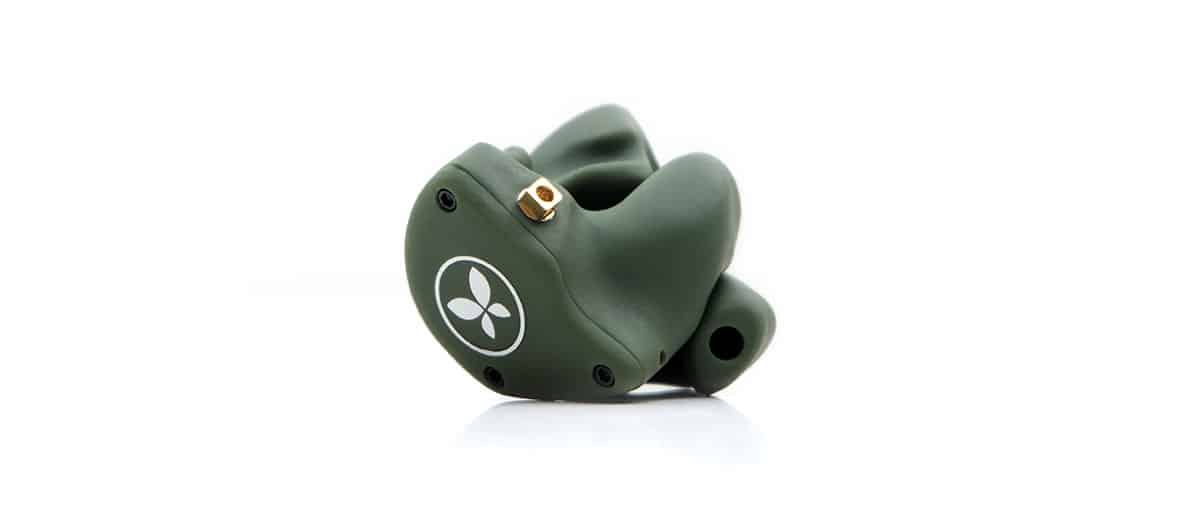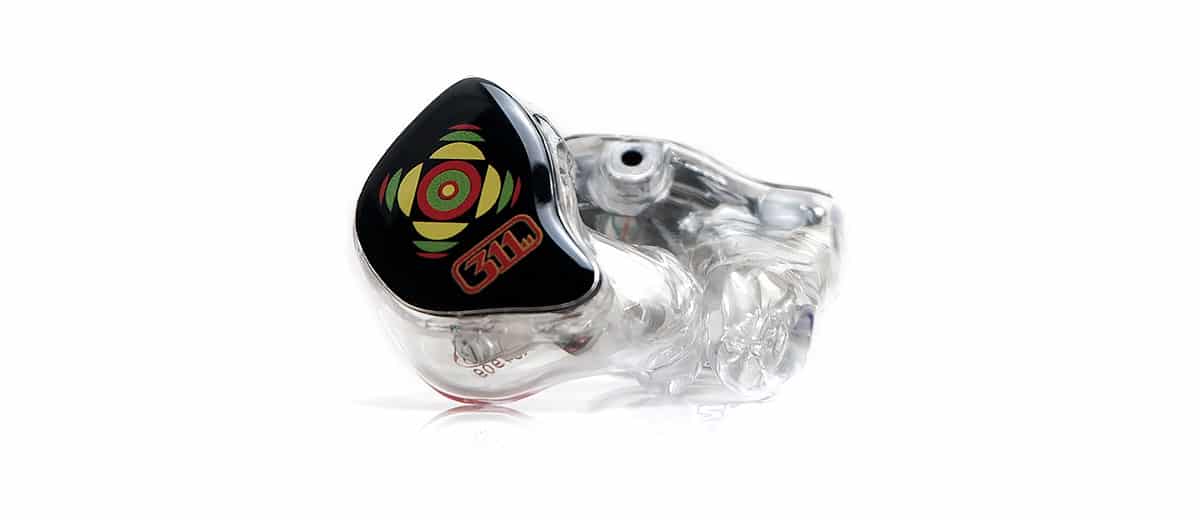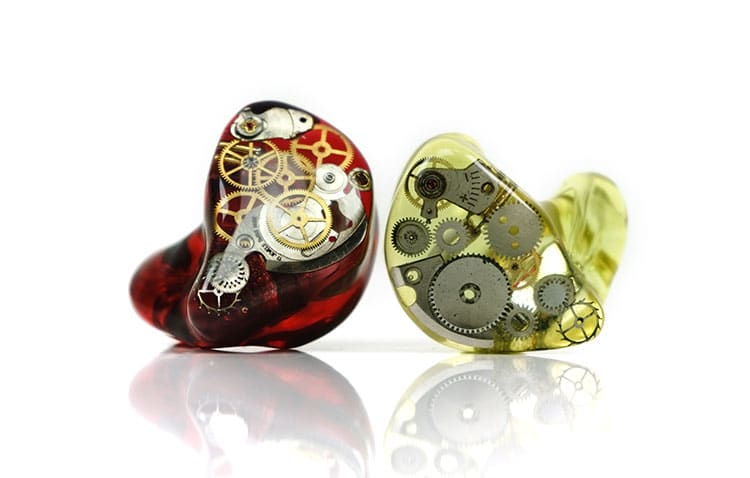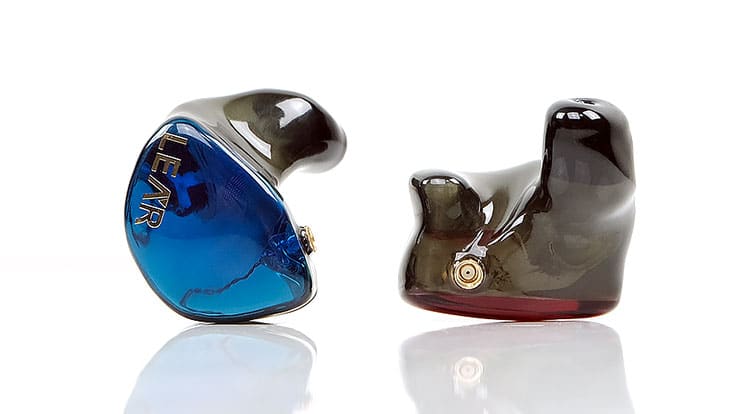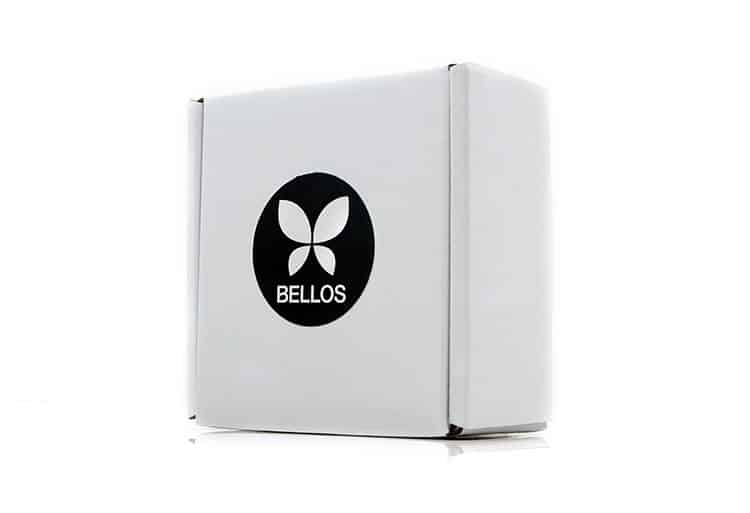Select Comparisons
Ultimate Ears UE5 PRO
$549
Technical
The Pro line from UE has always been marketed as a potential pro audio purchase with the UE5 Pro being their entry-level in the range.
Like the X2, the UE5 Pro is also a dual BA driver custom in-ear custom monitor with a single BA driver for the lows and mids and a BA for the highs using an integrated 2-way crossover. Quite a similar configuration and crossover use though I believe the choice of drivers is a bit different.
Based on my comparison listening it would seem the UE5 Pro uses a larger woofer-type BA driver for the lows and mids whereas the X2 seems to be using a regular-sized full-range driver. You can see how that comes across in the performance comments further down.
The UE5 Pro is less feature-rich internally compared to the X2 with nothing like the ATOM X system for pressure venting though both units are 3D Printed.
Sensitivity-wise the UE5 Pro is rated at 21Ω and 119dB SPL compared to the slightly harder-to-drive X2 which comes in at 30Ω and 114dB SPL. In our real-world testing between the two using the balanced output of the LP P6 Pro, there was about a 5-step volume difference between the low gain so the numbers feel fairly accurate to my ear.
Design
The UE5 Pro is 3D-printed through 3D modeling and very modern scan techniques but uses a classic custom resin material and is put together in such a way that fast repair without breaking the shell is quite difficult to do.
The X2, on the other hand, is designed specifically in the opposite direction being easy to take apart and service even though also 3D-printed.
Putting aside the benefits I suspect most audiophiles will find the polished resin of the UE5 Pro a little more comfortable in the ear compared to the rougher matte texture of the X2 Shell. However, the X2 does feel more durable and less likely to slide out of your hand accidentally.
Despite the pressure venting I also thought the X2 isolated a little better than the UE5 Pro. I suspect the UE Switch system with the hole in the main shell might be a factor here.
Aesthetically, I actually prefer the unique look of the X2 matte green finish. UE is hampered a little by their approach to 3D-Printing with only the plates being unique, (UE Switch), and interchangeable and the shell a fixed transparent tone.
Both have excellent connector systems and cables at this price point and both feel designed for stage use. The IPX system for the UE5 Pro is IPX rated and very easy to connect and disconnect. Similarly, the X2 RCX system is very tough with a strong sheath and an easy connection system.
The Linum G2 SuperBaX cable packaged with the UE5 Pro is similarly tough but it is a 4-core as opposed to X2 8-core scorpion wire and terminated with SE only whereas you can grab a 4.4mm with the X2 stock cable.
Performance
Pick the UE5 Pro if you want bass and pick the X2 if you want mids and highs. That is about as easy as I can frame it. Both the curve and the timbre of these two monitors are incredibly different sounding.
The UE5 Pro has an elevated and long bass shelf right up to around 500-400Hz or the start of the lower mids which gives it a more powerful and substantive bass response. It also colors the timbre of the UE5 Pro a bit warmer with a stronger fundamental and deeper staging element.
The X2 is flatter save for a mild mid-bass punch that keeps rhythmic passages from sounding overly analytical. I suspect there is a bit of roll-off sub-80Hz on the X2 also so you get far less depth and power but a bit more punch and a slightly pacier response to the bass.
The X2 timbre is thus more neutral in tone with a bit of contrast from a stronger upper-mids and lower treble presence.
This is also a more mid-centric presentation whereas the UE5 Pro does very well in terms of keeping mids clear from too much weight but still sounds relatively relaxed compared to the more forward 1-3k tuning of the X2.
Vocal presence in general is a lot stronger on the X2 with your ear being drawn to that 1-5k region. Higher-pitching vocals in particular have a lot more vibrancy and intimacy. The X2’s lower treble has more presence also though the UE5 Pro’s 7-8k region has some decent sparkle about it when called upon.
UE5 Pro’s staging is much deeper and slightly taller but a bit narrower through the mids despite the X2’s vocals being further forward. I would say the X2 does better through the mids for clarity and articulation.
Avara AV3
$340
Technical
The Avara AV3 is not pitched exclusively to the pro-audio audience quite like the X2, however, I do know local artists do work with Avara for monitoring products. The big attraction here is really the price for a triple BA driver design which is ‘bang for buck’ territory.
The precise configuration for the AV3 is a classic single BA for the lows, one for the mids, and a tweeter for the highs with a larger Knowles CI driver for the lows though with -6dB of damping to keep it balanced sounding. This is also a 3-way active crossover design as opposed to a 2-way crossover inside the X2.
The AV3 does not offer anything quite as feature-intense as the X2’s ATOM X pressure venting system or an RCX termination, instead using a standard 2-pin socket with a sealed shell.
The rating on paper is quite a contrast between these two with the AV3 measured and weighted at 50Ω and 120dB SPL compared to a much breezier 14Ω impedance level.
The SPL though is a bit lower at 114dB for the X2, however, in our real-world testing, the difference between them both using an HiBy R5 Gen 2 in Class A balanced mode wasn’t that noticeable. I did not feel the need to change the level between either to volume match.
Design
Much like the UE5 Pro, the AV3 is a 3D-printed classic resin design and is not as easily taken apart as the X2, especially with a silicone fill on the inside. The shells have to be basically broken and rebuilt again during servicing.
And just like the previous comparison it also means Avara’s resin customization is more nuanced and seamless compared to the detachable faceplate and visible seam of the X2. Again, the target audience here is slightly different and the typical audiophile is likely to want more customization capability.
However, the matte green of the X2 does have that durability benefit, grips a bit better, and is less likely to be damaged from slippage. Speaking of slippage, it does lock a lot more securely in your ear with a longer nozzle for deeper penetration closer to the second bend in your ear canal. The AV3’s resin, however, is smoother on the insert.
I find the isolation on both monitors to be on par despite the Atom X venting inside the X2. I suspect the stronger canal pressure and the longer nozzle are creating a stronger seal to offset the venting passive isolation loss.
Props to the X2 RCX connector system and the 8-wire scorpion wire stock cable, it’s much superior to the basic 4-core OFC 2-pin wire packaged with the AV3. I suspect if there is an area where Avara felt they could get to that lower price this was it.
Both cables handle well and indeed the AV3 stock is lighter and must as microphonic-free. It is more the dynamics in the performance with the AV3 4-core showing far less range and HF resolution.
Performance
Let’s start with the staging and resolution between these two monitors because I think the X2 has the edge here from the mids upwards. It sounds airier, wider, and more holographic through the mids and treble.
You get a much better level of immersion from the X2 acoustical arrangement whereas the AV3, despite being a triple driver, seems to sound a little narrower through the mids, not quite as well separated with vocals very centered and not as much air around them.
The treble on the AV3 is politer and combined with just slightly more sub-bass and general bass warmth it does produce a more liquid tone to its timbre. Slightly softer attacks make for a more forgiving sound signature in general.
The X2 is more belligerent for its timbre with a bias to a neutral tone with higher levels of contrast tone and stronger treble energy that brings out a bit more bite and vibrancy in its upper mids timbre.
You could argue it is the brighter of the two monitors in that context but it is not a sharp sound, but rather a harmonic balance slightly towards the odd than even.
One thing I did note was the bass punch which felt snappier and more purposeful on the X2. The AV3 has a moderate and balanced bass performance but the punch is just slightly softer once you volume match between the two.
Lear LCM-Skyline
HK$1,688.00
Technical
At around $220, the Skyline is the cheapest ever custom monitor we have reviewed to date here at Headfonics. Like the X2 it has a few interesting features but its driver configuration is very different.
Unlike the dual BA 2-way crossover config of the X2, the Skyline uses a single 8mm dynamic driver with a PEEK diaphragm and no crossovers. Already, without even touching on performance impressions you just know the texture and coloration of these two will differ markedly.
Both monitors do offer a pressure relief system, which at this price point is very useful. The X2 uses the Atom X internal filter module system whereas the Skyline does it in two ways.
The first is called Balance In-Ear Pressure which is a small mechanism inside the LCM-Skyline that helps balance in-ear pressure and reduces potential long-term damage to your hearing.
The second is called Hearing Care which is more of a tuning philosophy with no point in the FR peaking more than +6dB to reduce the potential of hearing loss at higher volumes.
On paper, the Skyline is rated at 16Ω and 109dB SPL which seems fairly efficient and yes you can run this on the low gain from most decent DAPs.
However, in our real-world testing, the Skyline was much less efficient compared to the X2 running many steps higher when volume matching using the HiBy R5 Gen 2 4.4mm PO in low gain.
Not just volume matching but general sensitivity to volume levels was slow to respond meaning this driver can suck up a lot of power whereas the X2 is much more responsive on less power.
Design
The Skyline is another classic resin-type 3D-printed custom in-ear monitor design so at the risk of repeating myself in this comparison section the pros and cons between it and the X2 are much the same.
The X2 is more durable and easier to service and repair. The Skyline is sleeker, and more polished looking with a livelier design but much harder to get serviced and probably takes longer also.
The Lear has a smaller form factor and slips in very smoothly compared to the textured matte shell of the X2 but in terms of isolation, our sample of the X2 does a better job.
Again, it is likely the slightly stronger canal pressure and deeper nozzle doing that. Also, you have to bear in mind that the Skyline is a vented dynamic driver custom so isolation will drop as a consequence.
The Skyline connector system is a classic MMCX though recently Lear introduced their ComboCon interchangeable socket system that allows you to mix and match connection types between 2-pin and MMCX.
I still think the X2 RCX is a tougher connector system for the rigors of the stage though and the stock 8-wire scorpion wire cable that comes with it is light years ahead of the 4-core SPC wire cable that comes as stock with the Skyline.
Performance
Since the Skyline uses a single dynamic driver the texture, decay, and low-end response are a lot more noticeable compared to the dual BA driver of the X2.
It reaches deep with a satisfying sub-bass extension and plenty of body to go alongside a distinctive mid-bass punch. It delivers a strong fundamental and dominates the harmonic composition driving above-neutral warmth into the mids.
This is a thick, rich, and euphonic tuning and will make the X2 sound comparatively clean and quite neutral sounding. The X2 will come across as a lot lighter but more articulate and speedier on the low end with just a minor but punchy mid-bass rise to generate a sense of rhythm in audio playback.
There is a bit of V-shaped tuning through the mids of the Skyline around 800Hz to 1k and though it does rise from 2-4k it’s still quite neutral in terms of imaging compared to the X2. If you want clear, clean vocals up front with good spacing on either side then the X2 will outperform the Skyline in that regard.
A similar case with the highs with the lower treble of the X2 showing more presence and influence on the instrumental coloration pushing percussion and higher pitching vocals further forward and stiffening the harmonic balance of note attacks. It resolves better through the mids and highs compared to the more liquid and relaxed Lear dynamic driver.
Overall, the staging is about power and depth from the Skyline with moderate vocal forwardness above 1k and a soft treble to create a beefy but dark-sounding performance. The X2 is shallower, but much wider and airier sounding creating a more neutral and articulate performance.
Our Verdict
The Bellos Audio X2 is something different at this price point. This is a custom monitor that creates a unique proposition for the pro audio studio in terms of durability, and ease of repair. Even for impatient audiophiles, that 3-to-5-day turnaround for building your order will appeal.
It is not just about that everyday use value. The sound signature is a definite contrast to the typical CI woofer-infused bass-heavy tuning typical of low-driver monitors in today’s market. This is neutral, this is clean, and above all, it delivers all that with impressive staging credentials.
I am also told this is just a starting point for the company with a few more models due out that will deliver different sound signatures including some additional bass extension if that’s your bag.
However, if you enjoy your mids, love a forward vocal image, and value clarity and articulation above all else the Bellos Audio X2 will give you that with a degree of confidence.
Bellos Audio X2 Specifications
- Dual Balanced Armature Driver
- 1 high, 1 mid/low
- 2-Way Crossover
- Frequency range: 20Hz -18kHz
- Sensitivity: 114 dB/mW
- Impedance: 30 Ohms at 1kHz
- Isolation: -17dB

